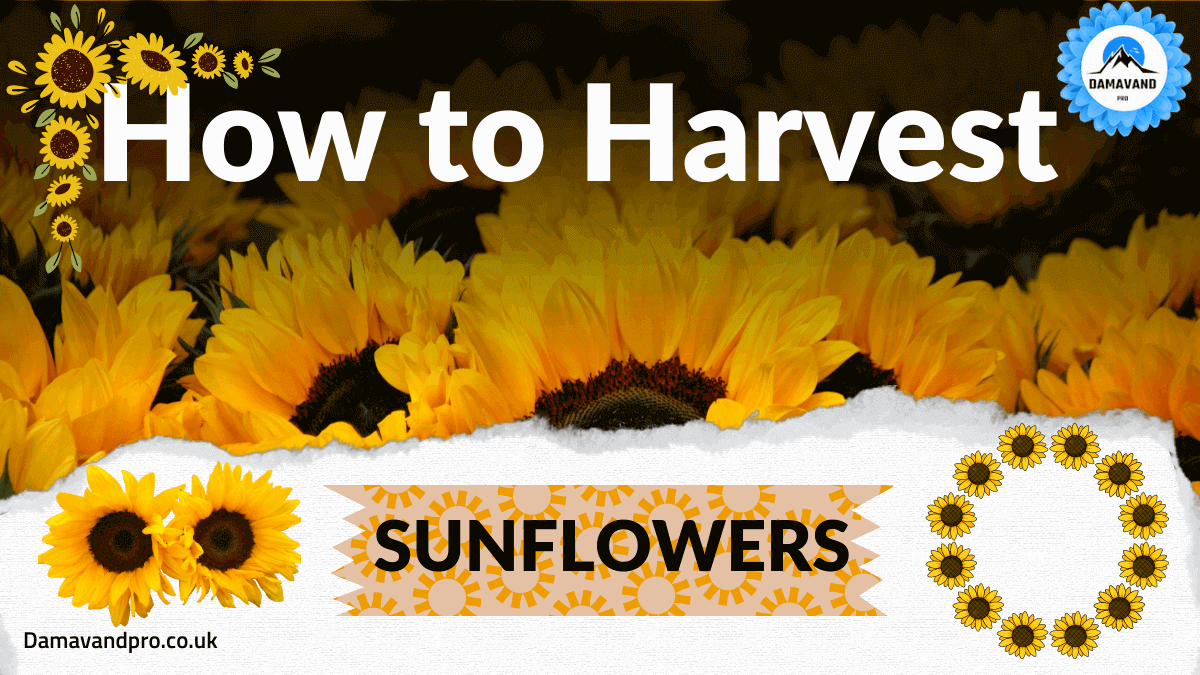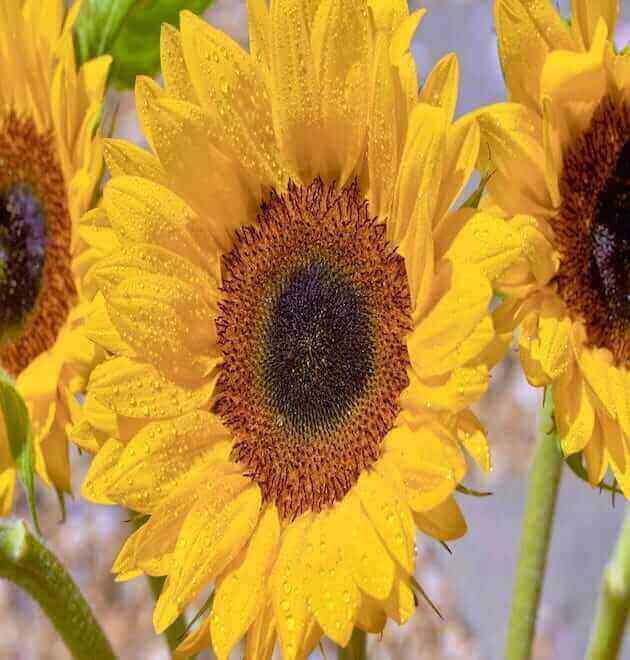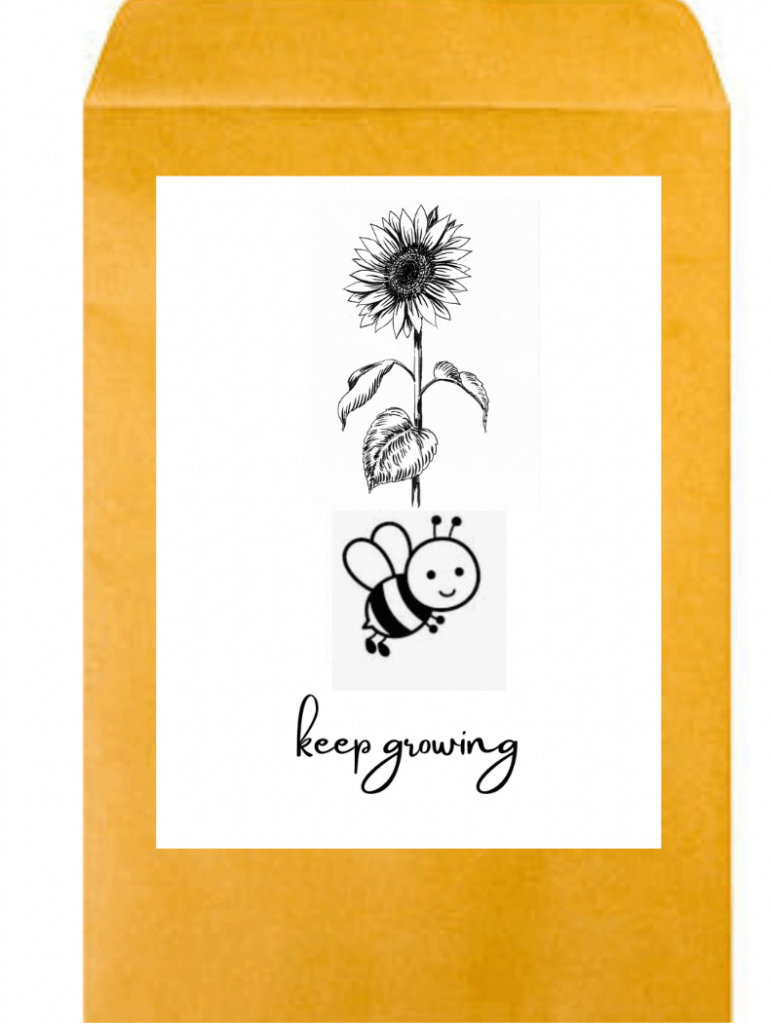+447709283333 | info@damavandpro.com

How to Harvest Sunflower Seeds: A Step-By-Step Process
How To Harvest Sunflower Seeds
Sunflower seeds are a great source of healthy, plant-based protein. They’re also an excellent source of vitamin E and magnesium. However, before you can enjoy all the benefits of sunflower seeds, you first need to know how to harvest them. In this blog post, we’re going to teach you everything you need to know about harvesting sunflower seeds, from the best time to harvest them to the steps involved in cutting and cleaning them. We also provide instructions for storing and using sunflower seeds. So, whether you’re looking for a healthy snack or a nutritious addition to your diet, sunflower seeds are the perfect choice.

Why harvest sunflower seeds?
Sunflower seeds are a delicious snack that can be enjoyed in many different ways. They’re a great source of healthy fats, protein, vitamins, and minerals, and they’re also a simple and nutritious snack. Harvesting sunflower seeds is a simple process that can be done with your own sunflower plants. You can roast them, raw them, or use them in recipes. So why not give harvesting sunflower seeds a try this summer? You won’t regret it!
Tips For Harvesting Sunflower Seeds
Sunflower seeds are a delicious and nutritious snack, and harvesting them is simple if you know how. Follow these tips for a successful harvest:
The best time to harvest sunflower seeds is when the flower heads are dry and brown. This way, the seeds will be less likely to get damaged. Wear gloves to protect your hands from the prickly sunflower heads, and use a sharp knife to cut the heads off the plant. Hang the flower heads upside down to dry for a few weeks before storing them in an airtight container in a cool, dark place. To shell the seeds, rub them between your hands or use a food processor.
The Best Time To Harvest Sunflower Seeds
Sunflower seeds are a delicious and versatile food. They can be enjoyed as is, or they can be used in various recipes. However, the best time to harvest them is when the flowers are starting to turn brown. This is because the flowers contain most of the seed-containing tissues, and once these tissues are removed, the seeds will be more accessible.
To harvest sunflower seeds, follow the following steps:
- Cut the flower heads off the plant with a sharp knife. Be careful not to damage any of the other parts of the plant.
- Hang the flower heads upside down in a cool, dry place so that they can start to release their seeds.
- Once the flowers have dried out completely, store them in an airtight container. Sunflower seeds will stay fresh for up to two years when stored this way.
Harvest Sunflower Seeds Early In The Morning To Avoid The Strongest Wind
Harvesting sunflower seeds can be a fun and rewarding experience, but it’s important to take precautions to avoid the strongest wind. Harvesting sunflower seeds by hand is the safest option, but it can be done in either the morning or afternoon. For those who choose to harvest by hand, be sure to wait until the back of the head is brown and then cut the stem about four inches below the head.
To harvest with a combine, wait until the heads are completely dry and then cut them off at the base. Sunflower seeds should then be stored in a cool, dry place for future use. It is also possible to roast sunflower seeds in the oven at a low temperature for a delicious flavor boost.
How To Cut A Sunflower For Seeds
Autumn is a beautiful time of year, and it’s the perfect time to harvest sunflower seeds. Sunflower seeds are one of the most important crops in your garden, and they’re easy to harvest if you follow these simple steps.
The best time to harvest sunflower seeds is in the late summer or early fall. This is when the sunflowers are at their peak, and their heads are full of seeds. If you wait any longer, the heads will be too dry and tough to cut. Make sure that you have a sharp knife before starting; a dull knife will only make things more difficult.

Dwarf Sunflower Seeds: A Beautiful and Beneficial Addition to Any Garden
After you’ve cut the heads off of the sunflowers, be sure to remove all the leaves and stems as well. This will make it easier to rub the seeds out of the heads later on. Finally, let them dry out completely—overnight is ideal—before storing them in a cool, dry place.
In springtime, it’s time to plant your sunflower seeds! Be sure to choose a sunny spot in your garden and water them generously until they begin to grow. Once they reach about two inches (5 cm), it’s time to put your seed in the ground. Watch them grow!
How To Clean Sunflower Seeds
Are you looking to add some sunflower seeds to your diet? Whether you’re a vegan, vegetarian, or just want a healthier snack, sunflower seeds are a great option. In this section, we’ll outline the steps needed to clean and store sunflower seeds, as well as provide some tips on how to roast them.
When cleaning sunflower seeds, it’s important to remove any dirt or debris that may be stuck to the surface. To do this, you can use a damp cloth or hand sanitizer. Make sure that you completely clean the seed before storing it away.
To harvest sunflower seeds, it’s best to start by removing the husks. Husks can be removed by hand or with a tool such as a husk chopper. Once the husks have been removed, it’s time to get ready to roast the seeds! To do this, simply place the sunflower seeds in an oven at 350 degrees Fahrenheit for about 20 minutes, or until they are golden brown and crisp. Enjoy your freshly roasted sunflower seeds!
How To Harvest Sunflower Seeds
Harvesting sunflower seeds is a fun and easy task that can be enjoyed by everyone. All you need are some materials, and you can get started right away. First, gather a 5-gallon bucket, gardening gloves, sharp scissors or pruning shears, and a tarp. Next, cut the sunflower heads off at the stem, being careful not to damage the plant, and place them in a single layer on the tarp. Allow them to dry for a few days.

Plant Growing Kit for Kids: Clover, Sunflower, Calendula – Fun Gift!
Once they are dry, rub the heads to release the seeds. You can store the seeds in an airtight container for future use or eat them straight from the bucket! Sunflower seeds are delicious and versatile; enjoy them today!
How To Store Sunflower Seeds
Harvesting sunflower seeds can be a fun and easy task, provided that you follow the correct steps. Here are five tips that will help you get started:
1. Start by cutting off the head of the sunflower, about six inches from the top of the stem. This will help to reduce waste and make it easier to harvest the seeds.
2. Place the sunflower head in a bowl and allow it to dry for a week or two. This will help to remove moisture and make sure that all of the seeds are collected.
3. Once the sunflower heads are dry, shake them over a sheet of paper to dislodge the seeds. Be careful not to crush them; they should be slightly cracked so that they can absorb water and start germinating.
4. Store the sunflower seeds in an airtight container in a cool, dark place—preferably away from direct sunlight—for up to one year. Alternatively, you can purchase pre-packaged seed packets, which usually last for three years before they need replacement.
5. To plant sunflower seeds, simply press them into the soil about ½ inch deep and water them well, just as you would with any other type of seed plant. Sunflower plants should grow quickly and be ready for harvest within 10 days!
How To Use Sunflower Seeds
Sunflower seeds are a delicious and healthy snack option that can be used in a variety of recipes. Below, we’ll outline the steps that you need to take in order to harvest sunflower seeds and use them in your favorite recipes.
First, grow sunflowers in your garden if you haven’t already. Sunflower seeds will grow best in warm climates, and they will produce a lot of seedlings if you water them well. Once the sunflowers have grown, it’s time to start harvesting them. Cut the flower heads off when they’re dry—usually when they reach about an inch or two tall. This will help to reduce the amount of waste that you’ll produce overall.
Hang the flower heads upside down to dry; this will help to remove moisture from the seedheads and speed up the process of drying them out. Be sure not to let the flowers touch each other, or else they may get contaminated with pollen.

Sunflower Seeds Giant Yellow Helianthus, Ideal for beds and Borders Organic 1kg
Rub the seeds out of the flower heads; this will help to reduce dust formation during storage and also increase their shelf life. You can also store sunflower seeds in an airtight container if you don’t have the time or inclination to rub them out yourself.
Winnow the seeds by shaking them gently in a bowl or container; this will remove any chaff (the straw-like parts of the seed) that remains after rubbings and drying processes are complete. Be sure not to overwinnow, or you’ll end up with too much chaff that isn’t usable for cooking or baking purposes.
Finally, toast your sunflower seeds by placing them on a baking sheet at 350 degrees Fahrenheit for about 10 minutes, or until they’re lightly browned and fragrant. This step helps to increase their flavor profile and make them more digestible. Store roasted sunflower seeds at room temperature for maximum freshness.
How To Harvest Sunflower Seeds
Harvesting sunflower seeds is a fun and easy task that can be completed in just a few minutes. The best time to harvest them is in the morning after the dew has evaporated, which allows the seeds to be dry and easy to pick. Here are the steps that you need to follow in order to harvest sunflower seeds:
- Clean and dry the container suitable for storing the sunflower seeds.
- Remove the desired amount of sunflower seeds from the head of the plant using your fingers or a fork.
- Spread the seeds out in a single layer on a baking sheet, and allow them to dry for 24 hours.
- Once they have dried, you can roast them for a crunchy treat. Enjoy!

10 x Sunflower Seeds Wedding Favors Communion Christening Baby Show
In short, Harvesting Sunflower Seeds
Harvesting sunflower seeds is a great way to enjoy the fruits of your labor. By following the tips in this blog, you can ensure that your sunflower seeds are harvested at the right time, cleaned properly, and stored safely. Enjoy your sunflower seeds as a snack or use them in a variety of recipes.
